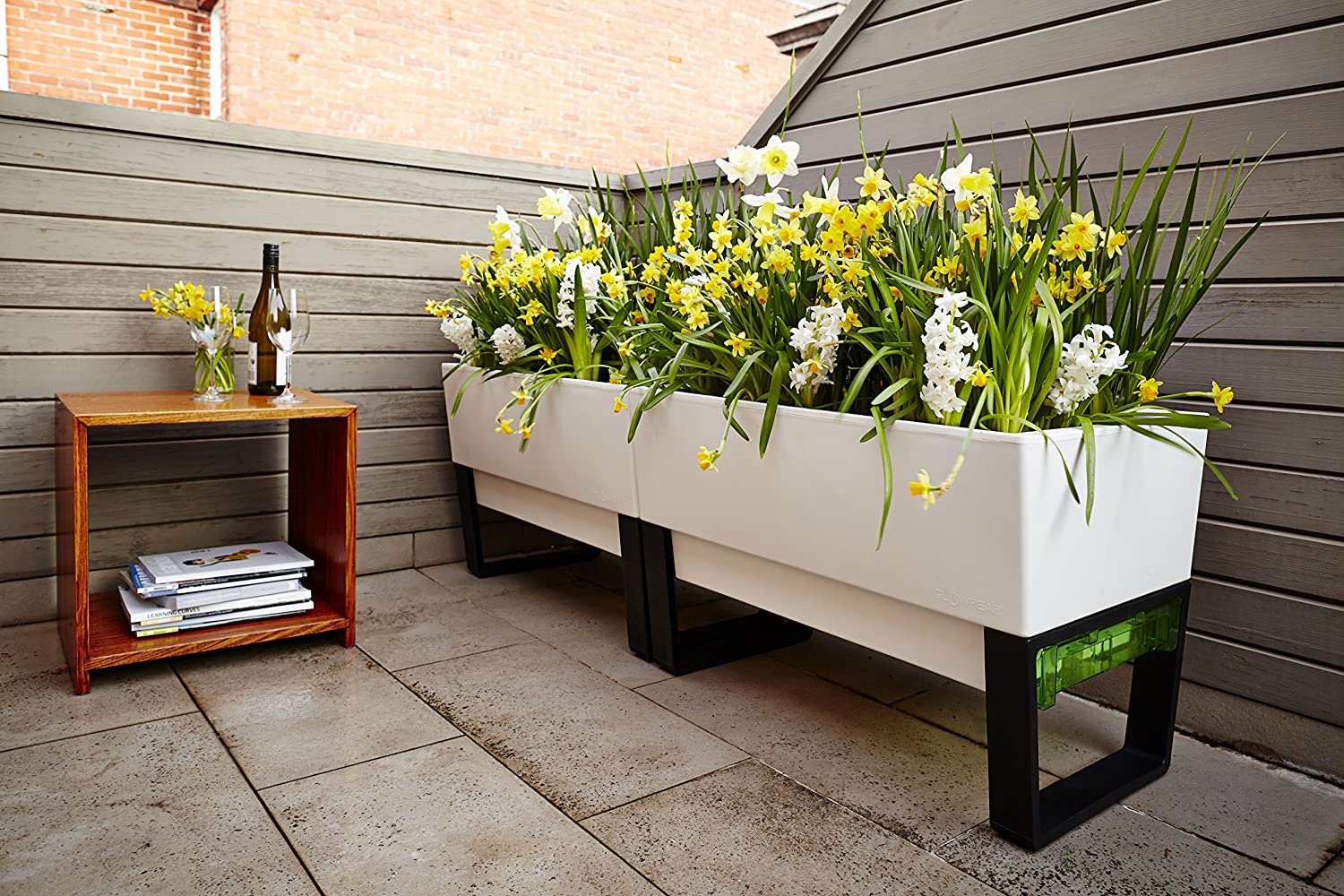Good Earth Plant Company’s advice on how to water your indoor plants hit pay dirt! Many of you read, commented, and shared the advice in our blog post last week. We are happy to help and thank you for passing our blogs on to your friends and family.
The watering tips and methods we discussed all involve surface irrigation. Surface irrigation is any watering technique adding water to the soil from above the plant. Rain provides surface irrigation.
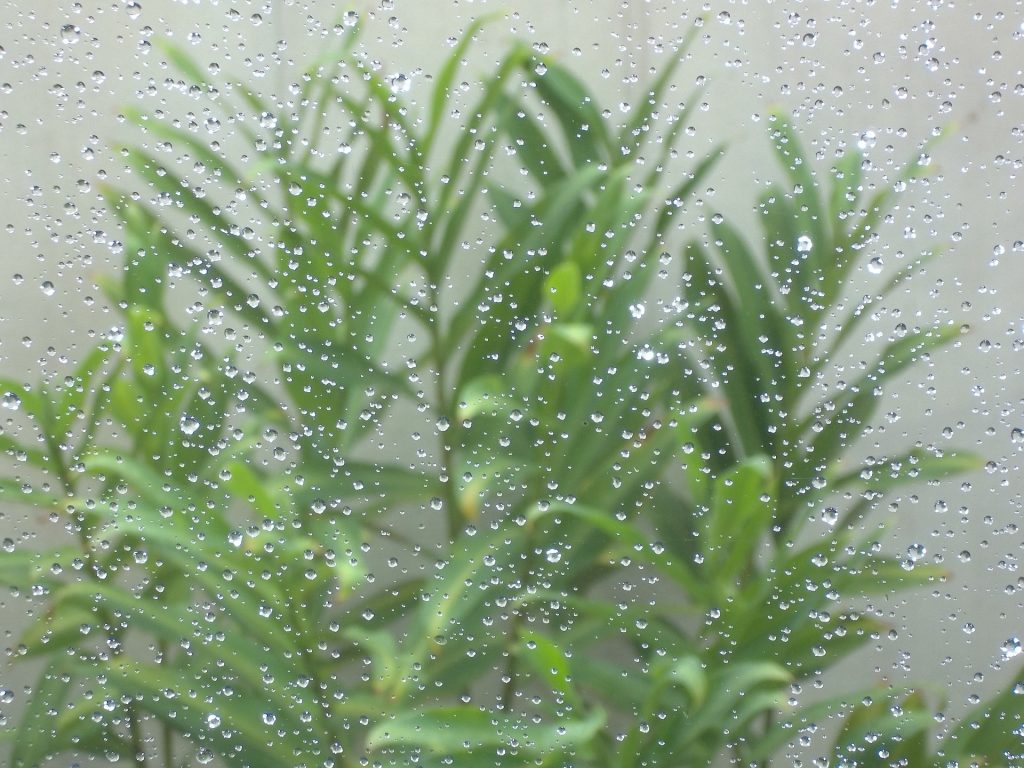
Rain is the original type of surface irrigation. Photo: Pixabay
But there’s one more way to water your container plants – so call this part three of our series about watering your plants.
Sub-irrigation describes any method of watering plants where the water is applied to the plant from the bottom up instead of the top down. This allows water to soak upwards into the plant through capillary action by the roots. The root ball acts like a sponge. It holds on to water and sends it to the rest of the plant as needed. Think groundwater or underground springs.
Regular containers for your indoor plants have holes in the bottom. This lets excess water drain out so your plant’s roots don’t sit in water and rot. It’s hard to imagine, but a major component of soil is air. Roots breathe. This is the most common reason indoor plants die: they drown! Once you have rotted roots, they lend themselves to infestations of bacteria, speeding along your plant’s death.
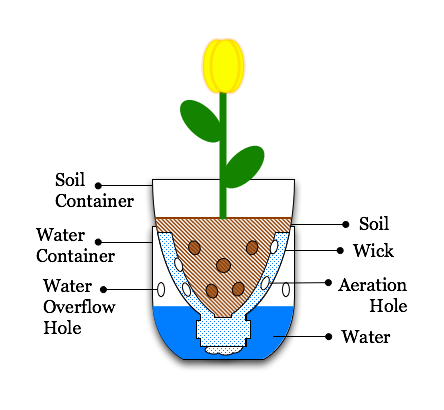
Illustration of a sub-irrigation system. Wikimedia
When you use sub-irrigation, you add water to some type of reservoir you fill directly when the water level is low. The plant sits above the reservoir and water is drawn up into the growing medium through some kind of delivery system. Sometimes a wick or a tube delivers the water up to the plant.
More sophisticated versions of sub-irrigation systems include containers or planters with built-in systems. Others have reservoirs with a gauge that tells you when you need to refill them. None of them are foolproof and still require some basic knowledge and actions on your part. We use sub-irrigation on thirsty plants, plants in hot windows, and in areas we cannot get into easily. It allows for greater periods of time between watering. improving our efficiency.
All of our green roofs use buried sub-irrigation lines. It’s much more efficient and helps build strong roots. But keep this in mind – we water from the surface for up to a year or so as the roots get established
Advantages of using sub-irrigation containers
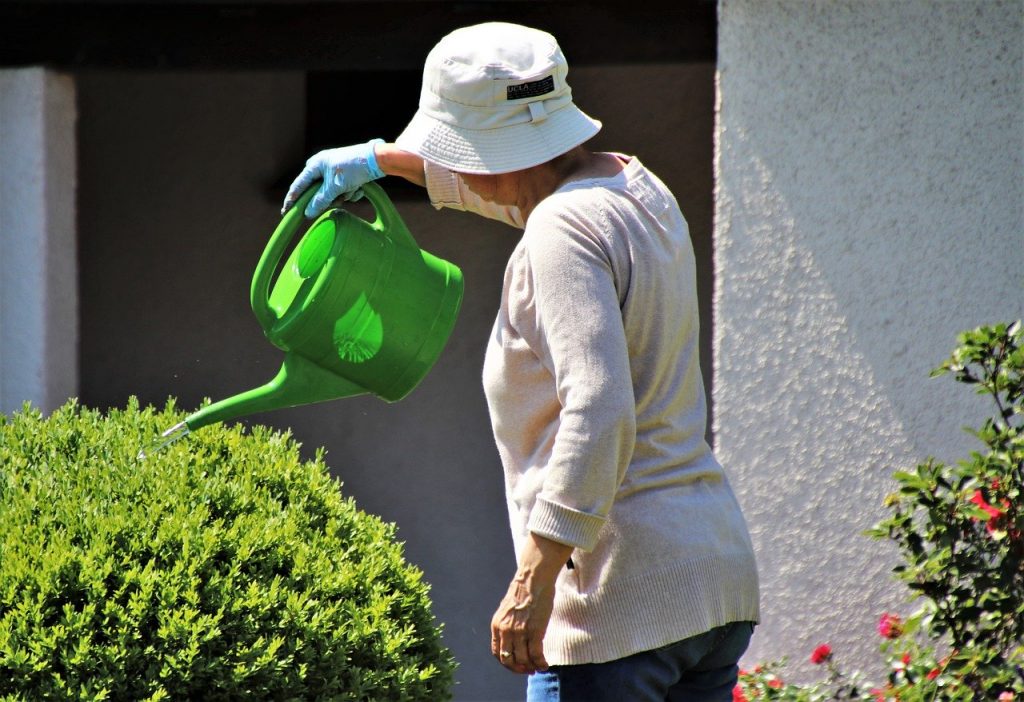
If you’re tired of trying to keep up with watering your plants, consider trying sub-irrigation. Photo: Pasaja/Pixabay
Many people have added indoor plants to their collection while staying at home during the pandemic shutdown. They are learning how much time and work it takes to maintain their indoor garden. Balancing the different needs of your plants depending on their water needs, sunlight, and temperature can be a challenge.
As people are starting to return to offices, it’s even harder to keep up the same amount of indoor plant care. Suddenly you realize there’s a plant over on a shelf you missed watering, and it is bone dry and close to death.
To try and compensate, people will completely drown all their plants hoping it will hold them all over in case the regular watering schedule gets out on hand, or if you finally get that chance to take some time off away from home for the first time in months.
Sub-irrigation systems using self-watering plant containers can solve a lot of these problems. You can fill the reservoir and leave, knowing your plants are watered properly for up to several weeks.
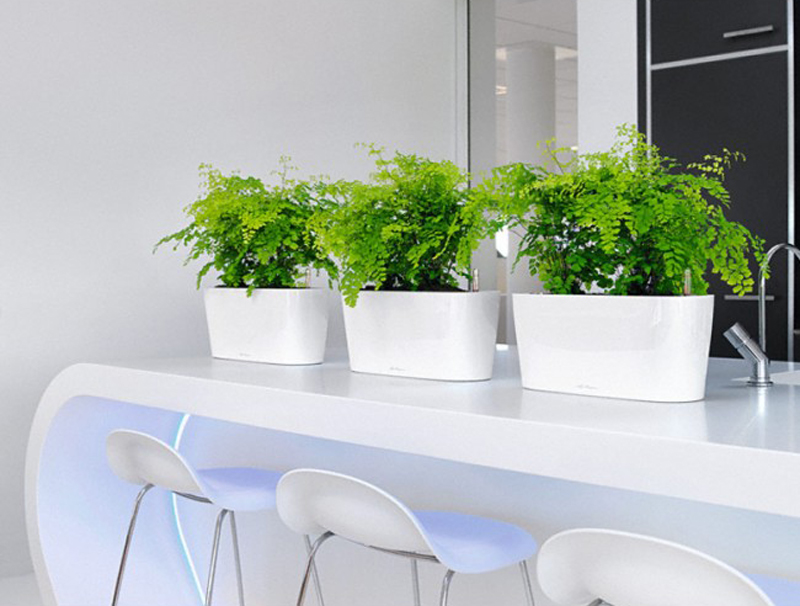
Sub-irrigation systems can solve a lot of your plant care problems. But you can’t set them, and forget them! Photo: Courtesy New Pro Containers
What it DOESN’T mean is setting it and forgetting it! You still need to keep an eye on your plants, especially at first to get a handle on how much water your plants use. You also need to keep an eye on your plants to get rid of pests. But since many pests love overwatered plants – fungus gnats, am I right? – you should have less trouble with indoor plant pests.
When you use surface irrigation, you wash away soil nutrients. You also lose more water to draining and evaporation. Sub-irrigation is more efficient and allows the plant to develop deeper, more extensive root systems. Plant stylists love sub-irrigation. 🙂
If you want to try sub-irrigation at home, you can purchase containers with these systems built into them. They usually have a removable reservoir to hold the water and some kind of wicking feeding water to the roots through capillary action. If you have pandemic time on your hands and you’re tired of jigsaw puzzles, you can go the DIY route. It’s not too hard to find tutorials on YouTube. Here’s a good one.
If you’re going to this much trouble, we suggest you try this with larger planters outdoors on patios or decks for vegetable gardens. In general plants from tropical climates that like moist soil do well with these systems.
Some maintenance advice: if you’re in San Diego County or another area with a lot of salts and minerals in your tap water, give your plants a thorough top watering with rainwater or water allowed to stand for 24 hours to flush out accumulated salts before you sub-irrigate. Over time the salts will accumulate on the top of the soil. You can see it and easily remove it with a trowel. If you can remove the reservoir that holds the water, it’s a good time to rinse it out too. If you can’t remove it, let the top watering drain out to help flush out the mineral buildup.
It’s also recommended to repot container plants with new soil to avoid mineral buildup as the root ball fills the pot. Rootbound plants will eventually decline. You can add the old soil to your compost heap, or rinse/leach it thoroughly to use again.
Need more information, or would rather call on someone to care for your beautiful plants? Then give Good Earth Plant Company a call at 858-576-9300. We love to help!

